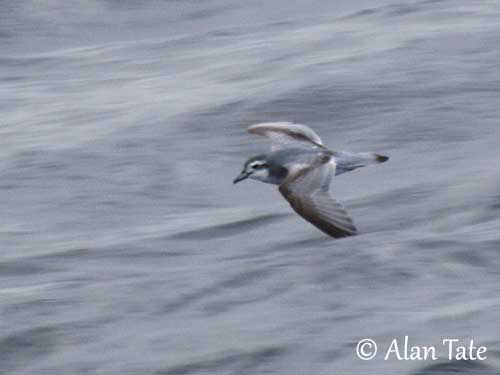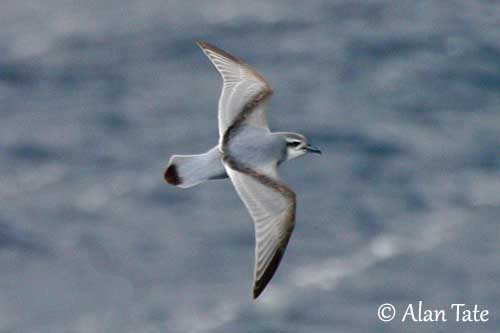
Fr: Prion de la Désolation
Ang: Antarctic Prion
All: Taubensturmvogel
Esp: Prión antártico
Ita: Prione antartico
Nd: Antarctische Prion
Sd: Antarktisk valfågel
Photographers:
Otto Plantema
Trips around the world
Alan & Ann Tate
AA Bird Photography
Text by Nicole Bouglouan
Sources:
HANDBOOK OF THE BIRDS OF THE WORLD vol 1 by Josep del Hoyo-Andrew Elliot-Jordi Sargatal - Lynx Edicions - ISBN: 8487334105
A Complete Guide to Antarctic Wildlife by Hadoram Shirihai and Illustrated by Brett Jarrett - Edited by Guy M. Kirwan - ALUL.A Press Oy, Finland - ISBN 9519894705
BirdLife International (BirdLife International)
Australian Antarctic Division: Leading Australia's Antarctic Program
New Zealand birds and birding (Narena Olliver)
Biodiversity Explorer – The Web of Life in Southern Africa
Wikipedia, the free encyclopaedia
Antarctic Prion
Pachyptila desolata
Procellariiformes Order – Procellariidae Family
INTRODUCTION:
The Antarctic Prion is included in the genus Pachyptila with five other prions very similar externally. All species occur in the Southern Ocean. They have a distinct dark M-shaped marking across the upperwing.
The prions of genus Pachyptila show characteristic bill shape with broadened mandibles. The upper mandible is fringed with lamellae used for filtering the water when they are feeding at sea. Another peculiar feature is the “gular pouch” under the lower mandible, an area of flexible and extensible skin. This pouch allows the birds to bring food to the chicks. Like numerous Procellariidae, they visit their nest burrows at night, in order to avoid predators.

DESCRIPTION OF THE BIRD:
Biometrics:
Length: 25-28 cm
Wingspan: 58-66 cm
Weight: 150 g in average, but it may vary from 115 to 183 g.
The adult has blue-grey to grey upperparts with narrow but conspicuous blackish M across the upperwing. The uppertail is grey to blue-grey with broad black tip.
The underparts are white, including underwing and undertail, except a dark area on central rectrices. The thighs are mostly grey.
On the head, forehead and crown are darker grey. We can see a dusky eye-stripe. Supercilium, lores to cheek and lower face are white, whereas the neck-sides are blue-grey.
The broad bill is blue-grey with black culmen. The upper mandible is fringed with lamellae (comb-like filters) not visible when the bill is closed. The eyes are blackish. Legs and webbed feet are blue to grey, with pinkish tinge on the webs.
Both adults are similar.
The juvenile resembles adult. Prior to the moult, the bleached upperwing with browner M-shaped marking becomes patchily white.
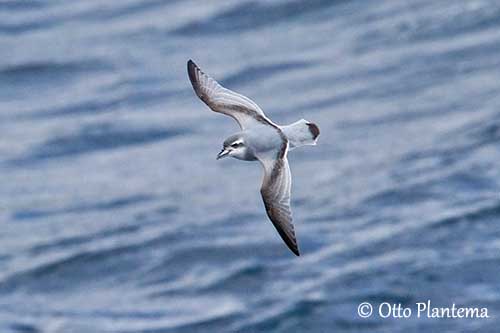
RANGE:
The Antarctic Prion is widespread in Southern Ocean. It breeds on several islands such as Scotia Arc, South Orkney Islands, South Georgia and South Sandwich Islands, on Crozet, Kerguelen Islands, Heard Island, Macquarie Island and Auckland Island, and on Scott Island in Antarctica (and formerly in coastal Antarctica, at Cape Denison on King George V coast).
HABITAT:
The Antarctic Prion is highly pelagic and remains away from land except for breeding. It usually occurs in cold waters often N of the pack ice.
During the breeding season, it nests in burrows excavated in various habitat types such as slopes, plateaux, gullies, screes and cliffs, or in rock crevices.

CALLS AND SONGS: SOUNDS BY XENO-CANTO
The Antarctic Prion is usually silent at sea. However, it becomes more vocal at the breeding colonies at night. It utters twittering, loud shrill squawks and squeals, and dove-like crooning “uc coo uc coo u-u-u-u-u-uc cuc coo o-o-o-o”. While flying over the colonies, it gives a piping whistle, also uttered within the burrow.
BEHAVIOUR IN THE WILD:
The Antarctic Prion feeds primarily on crustaceans and mainly krill of genus Euphausia, copepods (Calanoides) and amphipods (Themisto). It also takes small amount of Myctophidae fish and squid.
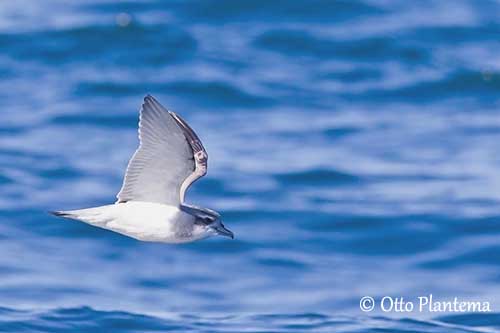
It feeds mainly by surface-seizing, while performing hydroplaning. The bird flies into the wind with extended wings, and dips both head and neck into the upper 10 centimetres below the surface. It may perform shallow dives from the surface.
It often forages around killer wales in SW Atlantic Ocean. It also flies alongside long vessels, but it is not attracted to boats.
This species usually occurs in large flocks, sometimes with other prion species.
The Antarctic Prion is gregarious at sea and on land. Like other Procellariidae, they are monogamous and have long-term pair-bonds. Prior to the egg-laying, the female alone performs a pre-laying exodus in late November for feeding.
They are nocturnal at their breeding sites and cannot use visual displays. However, they communicate through acoustic or tactile signals, and also use their sense of smell.
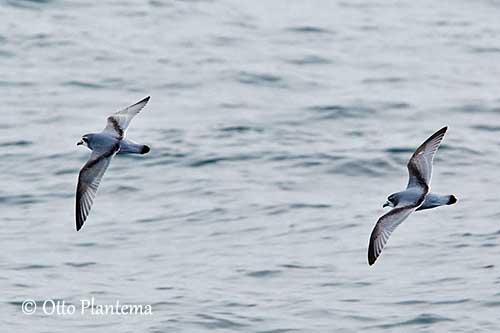
Some threatening postures accompanied by calls and hisses are observed during territorial defence, but usually, only the nest chamber is defended.
Most displays and sexual activity take place inside the burrow. Courtship is simple and often consists of “Billing” with oil dribbling down the bill. Both mates also perform mutual preening followed by long calls.
The Antarctic Prion moves N after breeding. It can be observed over S Atlantic and S Indian Oceans, moving from the pack ice to subtropical latitudes off South America (off S Peruvian and Chilean coasts). It also occurs off South Africa and Australia.
The flight is fast, buoyant and erratic. The Antarctic Prion performs twisting glides interspersed with short bursts of shallow wingbeats. It usually flies fairly high above the sea surface. The flight is slower in calm weather.
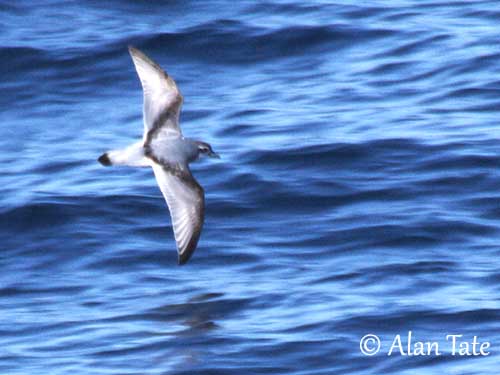
REPRODUCTION OF THIS SPECIES:
The Antarctic Prion returns to the colonies in October/early November. The laying occurs over three weeks in December, after the female’s pre-laying exodus.
They form dense colonies with in average 1-4 burrows/square metre. They excavate their burrows of 23-100 centimetres deep. The nest chamber is sometimes lined with pieces of vegetation such as twigs, mosses and lichens, and some pebbles. The burrow can be excavated in both wet and dry soils.
The female lays a single white egg. Both adults share the incubation during 44-46 days, with stints of 1-5 days.
At hatching, the chick has grey down. It is fed at night by both parents. The young fledges between 45 and 55 days after hatching.
Both parents share all the nesting duties. This species produces a single brood per season.
The chicks are vulnerable to predation by skuas, introduced cats and rats, and by Wekas on Macquarie Island.
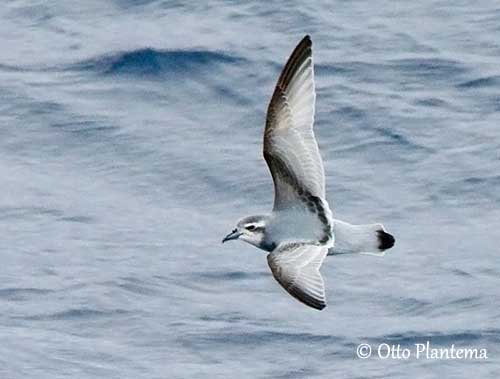
PROTECTION / THREATS / STATUS:
The Antarctic Prion has wide range, but some declines due to habitat destruction and predation by introduced mammals are suspected.
However, this species is abundant and widespread throughout the range in spite of the commercial exploitation of krill that might have a serious impact on the populations in some areas.
The global population was estimated at about 50,000,000 individuals in 2004.
The Antarctic Prion is not globally threated and currently evaluated as Least Concern.
